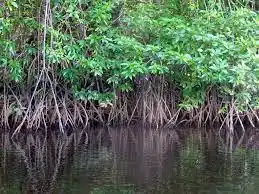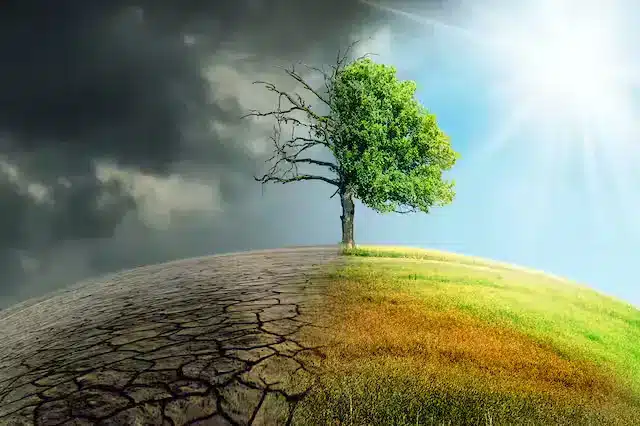National Parks in India
A national park is a large area that is protected by the government where a vast variety of animals, flora, fauna, any geomorphological site, and the entire ecosystem are preserved for security, education, and recreational purposes. The main objective of a national park is to protect the natural environment of the area and biodiversity conservation.
- The national parks in India are highly secured and protected and allow minimum human interference in them. This means any type of activity which can harm the environment and wildlife, like hunting and poaching, is strictly prohibited at national parks.
- A national park has more restrictions as compared to a wildlife sanctuary.
- Their boundaries are fixed and defined.
- The first national park in India was Jim Corbett National Park, named after the naturalist Jim Corbett in 1936.
What is allowed and what is not allowed inside National Parks:
- Here, no human activity is allowed.
- Grazing of livestock and private tenurial rights are not permitted here.
- Species mentioned in the Schedules of the Wildlife Act are not allowed to be hunted or captured.
- No person shall destroy, remove, or exploit any wildlife from a National Park or destroy or damage the habitat of any wild animal or deprive any wild animal of its habitat within a national park.
- They cannot be downgraded to the status of a ‘sanctuary’.

Declaration of National Parks:
- National parks can be declared both by the Central Government and State governments.
- No alteration of the boundaries of a national park shall be made except on a resolution passed by the State Legislature.
Important Facts about National Park in India
| National Park in India 2022 | Highlights |
| Number of National Parks in India | 108 |
| Latest National Parks in India | Dehing Patkai National Park, Assam |
| Who designates a National Park in India | State Government |
| First National Park in India | Hailey National Park is the oldest national park in India, now known as Jim Corbett national park |
| Largest National Park in India | Hemis National Park is the biggest national park in India, located in Ladakh with an area of 3350km2 |
| Floating National Park in India | Keibul Lamjao National Park is a floating national park, located in Manipur |
| Smallest National Park in India | South Button Island National Park in Andaman and Nicobar Islands |
| Highest National Park in India | Hemis National Park |
Important Difference Between National Park, Wildlife Sanctuary And Biosphere Reserve
Latest National Parks in India 2022
As per the database, Raimona National Park is the latest addition to National Parks in India. Dehing Patkai Wildlife Sanctuary is also under consideration of upgrading to the national park status.
- Raimona National Park is the 6th national park in Assam. It is in the western buffer to the Manas National Park. Pekua river forms a boundary to the park.
- There are a total of six marine national parks in India.
- Omkareshwar National Park, MP was added in 2013.
List of National Parks in India: Updated till 2022
| S. No | Name of State | Name of the National Park in India |
| 1 | Andhra Pradesh | Papikonda National Park |
| 2 | Rajiv Gandhi National Park (Rameswaram) | |
| 3 | Sri Venkateswara National Park | |
| 4 | Arunachal Pradesh | Mouling National Park |
| 5 | Namdapha National Park | |
| 6 | Assam | Dibru-Saikhowa National Park |
| 7 | Dehing Patkai National Park | |
| 8 | Raimona National Park | |
| 9 | Kaziranga National Park | |
| 10 | Manas National Park | |
| 11 | Nameri National Park | |
| 12 | Orang National Park | |
| 13 | Bihar | Valmiki National Park |
| 14 | Chhattisgarh | Guru Ghasidas National Park |
| 15 | Indravati National Park | |
| 16 | Kanger Ghati National Park | |
| 17 | Goa | Mollem National Park |
| 18 | Gujarat | Blackbuck National Park, Velavadar |
| 19 | Gir Forest National Park | |
| 20 | Marine National Park, Gulf of Kutch | |
| 21 | Vansda National Park | |
| 22 | Haryana | Kalesar National Park |
| 23 | Sultanpur National Park | |
| 24 | Himachal Pradesh | Great Himalayan National Park |
| 25 | Inderkilla National Park | |
| 26 | Khirganga National Park | |
| 27 | Pin Valley National Park | |
| 28 | Simbalbara National Park | |
| 29 | Jharkhand | Betla National Park |
| 30 | Karnataka | Anshi National Park |
| 31 | Bandipur National Park | |
| 32 | Bannerghatta National Park | |
| 33 | Kudremukh National Park | |
| 34 | Nagarhole National Park | |
| 35 | Kerala | Anamudi Shola National Park |
| 36 | Eravikulam National Park | |
| 37 | Mathikettan Shola National Park | |
| 38 | Pambadum Shola National Park | |
| 39 | Periyar National Park | |
| 40 | Silent Valley National Park | |
| 41 | Madhya Pradesh | Bandhavgarh National Park |
| 42 | Omkareshwar National Park | |
| 43 | Kanha National Park | |
| 44 | Kuno National Park | |
| 45 | Madhav National Park | |
| 46 | Mandla Plant Fossils National Park | |
| 47 | Panna National Park | |
| 48 | Pench National Park | |
| 49 | Sanjay National Park | |
| 50 | Satpura National Park | |
| 51 | Van Vihar National Park | |
| 52 | Maharashtra | Chandoli National Park |
| 53 | Gugamal National Park | |
| 54 | Navegaon National Park | |
| 55 | Sanjay Gandhi National Park | |
| 56 | Tadoba National Park | |
| 57 | Manipur | Keibul Lamjao National Park |
| 58 | Sirohi National Park | |
| 59 | Meghalaya | Balphakram National Park |
| 60 | Nokrek National Park | |
| 61 | Mizoram | Murlen National Park |
| 62 | Phawngpui Blue Mountain National Park | |
| 63 | Nagaland | Ntangki National Park |
| 64 | Odisha | Bhitarkanika National Park |
| 65 | Simlipal National Park | |
| 66 | Rajasthan | Desert National Park |
| 67 | Keoladeo National Park | |
| 68 | Mukundra Hills National Park | |
| 69 | Ranthambore National Park | |
| 70 | Sariska Tiger Reserve | |
| 71 | Sikkim | Khangchendzonga National Park |
| 72 | Tamil Nadu | Guindy National Park |
| 73 | Gulf of Mannar Marine National Park | |
| 74 | Indira Gandhi Sanctuary and National Park | |
| 75 | Mudumalai National Park | |
| 76 | Mukurthi National Park | |
| 77 | Telangana | Kasu Brahmananda Reddy National Park |
| 78 | Mahavir Harina Vanasthali National Park | |
| 79 | Mrugavani National Park | |
| 80 | Tripura | Bison (Rajbari) National Park |
| 81 | Clouded Leopard National Park | |
| 82 | Uttar Pradesh | Dudhwa National Park |
| 83 | Uttarakhand | Gangotri National Park |
| 84 | Govind Pashu Vihar National Park | |
| 85 | Jim Corbett National Park | |
| 86 | Nanda Devi National Park | |
| 87 | Rajaji National Park | |
| 88 | Valley of Flowers National Park | |
| 89 | West Bengal | Buxa Tiger Reserve |
| 90 | Gorumara National Park | |
| 91 | Jaldapara National Park | |
| 92 | Neora Valley National Park | |
| 93 | Singalila National Park | |
| 94 | Sundarbans National Park | |
| 95 | Andaman & Nicobar Islands | Campbell Bay National Park |
| 96 | Galathea National Park | |
| 97 | Mahatma Gandhi Marine National Park | |
| 98 | Middle Button Island National Park | |
| 99 | Mount Harriet National Park | |
| 100 | North Button Island National Park | |
| 101 | Rani Jhansi Marine National Park | |
| 102 | Saddle Peak National Park | |
| 103 | South Button Island National Park | |
| 104 | Jammu & Kashmir | Dachigam National Park |
| 105 | Kishtwar National Park | |
| 106 | Kazinag National Park | |
| 107 | Salim Ali National Park | |
| 108 | Ladakh | Hemis National Park |
Top 10 National Parks in India
As per the area covered, here are the Top 10 National Parks in India
- HemisNational Park – 3350 km2
- DesertNational Park- 3162 km2
- Gangotri National Park – 2390.02 km2
- Kishtwar High Altitude National Park – 2191.5 km2
- Namdapha National Park – 1807.82 km2
- Khangchendzonga National Park- 1784 km2
- Guru Ghasidas (Sanjay) National Park – 1440.71km2
- Sunderban National Park – 1330.1km2
- Indravati (Kutru) National Park – 1258.37km2
- Papikonda National Park -1012.8588 km2
Importance of National Parks in India
National Parks are the protected boundaries by the government to preserve nature’s area of wilderness. National parks play a very important role in the environment as
- National Parks act as the in-situ environment for wildlife.
- National Parks are protected by the government to preserve the natural environment, wildlife, flora, and fauna.
- National Parks also promote education in the field of environmental studies.
- The establishment of national parks not only aids in the conservation of wildlife and other living things but also promotes outdoor recreational activities.
- It is important to have national parks as it preserves biodiversity, which if somehow get disturbed, may affect the ecosystem of a particular area on a large scale.
Also, refer:
- Ramsar Sites In India
- Environmental organizations in India
- Important MCQs On Air Pollution
- Important Multiple Choice Questions On Air Pollution








